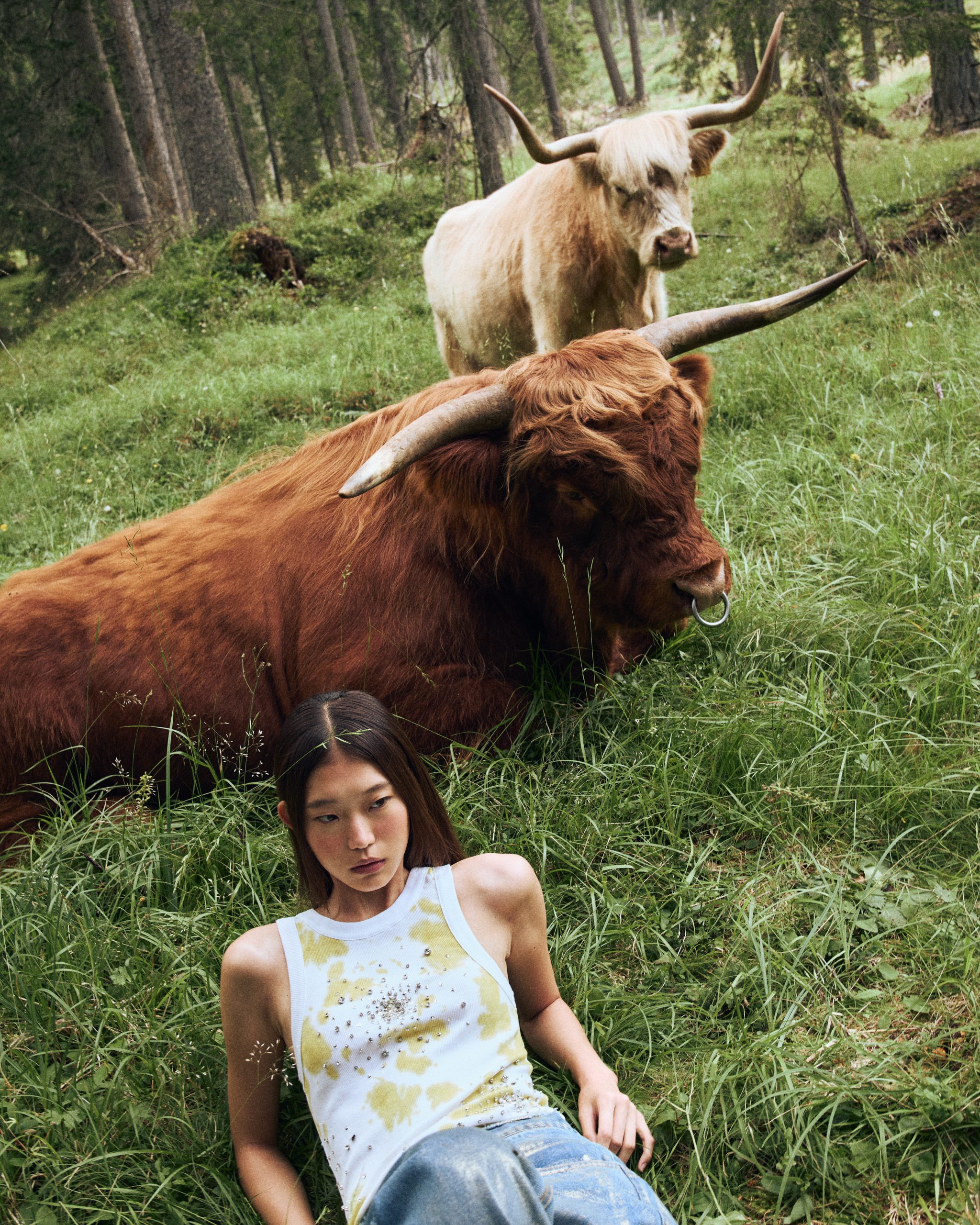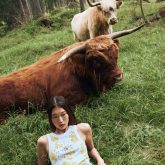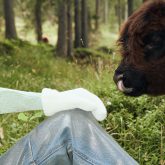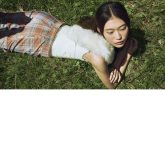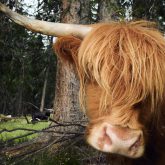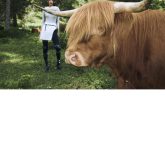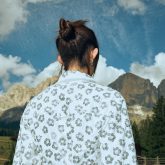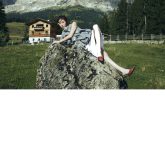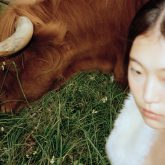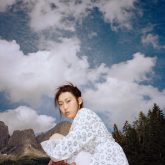No glossy studio, no carefully orchestrated lighting, no curated backdrops. Just a pasture, a herd of cows, and a series of spontaneous clips. She moves among the animals with ease, presenting them one by one as though they were models stepping into the spotlight. The tone is playful, tender, and slightly absurd — a parody that never feels forced. Instead, it feels like a conversation between friends, delivered with the same casual enthusiasm you might hear when describing a new collection backstage.
Each cow becomes a character. They are introduced with names, quirks, and small gestures that frame them as individuals, not just anonymous figures in the landscape. What makes this remarkable is how quickly the field begins to look like a runway, the herd like a cast, and the performance like a fashion show stripped down to its most ironic essence. The grass replaces the catwalk, and in that shift, something radical happens: everyday life becomes aesthetic material.
The beauty lies in its simplicity. By treating the cows with the same attention usually reserved for clothes or accessories, the video opens up a playful reversal. Fashion, which so often prides itself on distance, exclusivity, and perfection, is suddenly relocated to the ordinary and the spontaneous. The pasture becomes a stage, and its inhabitants become unlikely muses.
A Pop Echo
This visual and conceptual game inevitably calls to mind Andy Warhol’s Cow (1966). At first glance, Warhol’s decision to create wallpaper featuring a repeated image of a cow seemed trivial, almost banal. Yet that was precisely its provocation. By taking an animal traditionally excluded from “high art” and serialising it into an icon, Warhol dismantled the boundary between the everyday and the monumental, between kitsch and culture.
Here, the gesture is different but equally resonant. Instead of turning the cow into a flat, repetitive motif, the video restores it as a living presence — humorous, affectionate, strangely relatable. Warhol’s Cow mocked the solemnity of painting by elevating the most ordinary subject imaginable. This project, in turn, embraces the same spirit of irreverence, but channels it through performance and intimacy. The result is not satire at the expense of the animal, but a reframing that makes the cows themselves co-authors of the narrative.
Redefining the Codes of Fashion Film
The fashion film, as a genre, has long been defined by sleek choreography, hyper-stylised aesthetics, and a certain distance from reality. By contrast, this work dismantles those codes with irony and tenderness. There is no separation between fashion and life, no hierarchy between model and landscape. Instead, there is a fusion: cows and couture, affection and irony, grass and glamour.
The critical force lies in this juxtaposition. To present a cow with the same sincerity as a handbag, or to treat the rhythm of a pasture as the pacing of a catwalk, is to challenge the very criteria of what counts as fashion imagery. It reclaims humor as a legitimate tool, while also insisting on authenticity as part of style.
Towards a New Iconography
What emerges is a new kind of iconography — playful, light, but radical in its refusal to separate fashion from the everyday. Like Warhol’s Cow, it pushes us to ask: what deserves to be seen, repeated, remembered? And like all great pop gestures, it answers by suggesting that the ordinary is never just ordinary.
Here, the cows are not background. They are protagonists, muses, even co-hosts of a performance that insists on collapsing distance and hierarchy. Fashion becomes less about elevation and more about encounter: closer, freer, and undeniably more fun.
